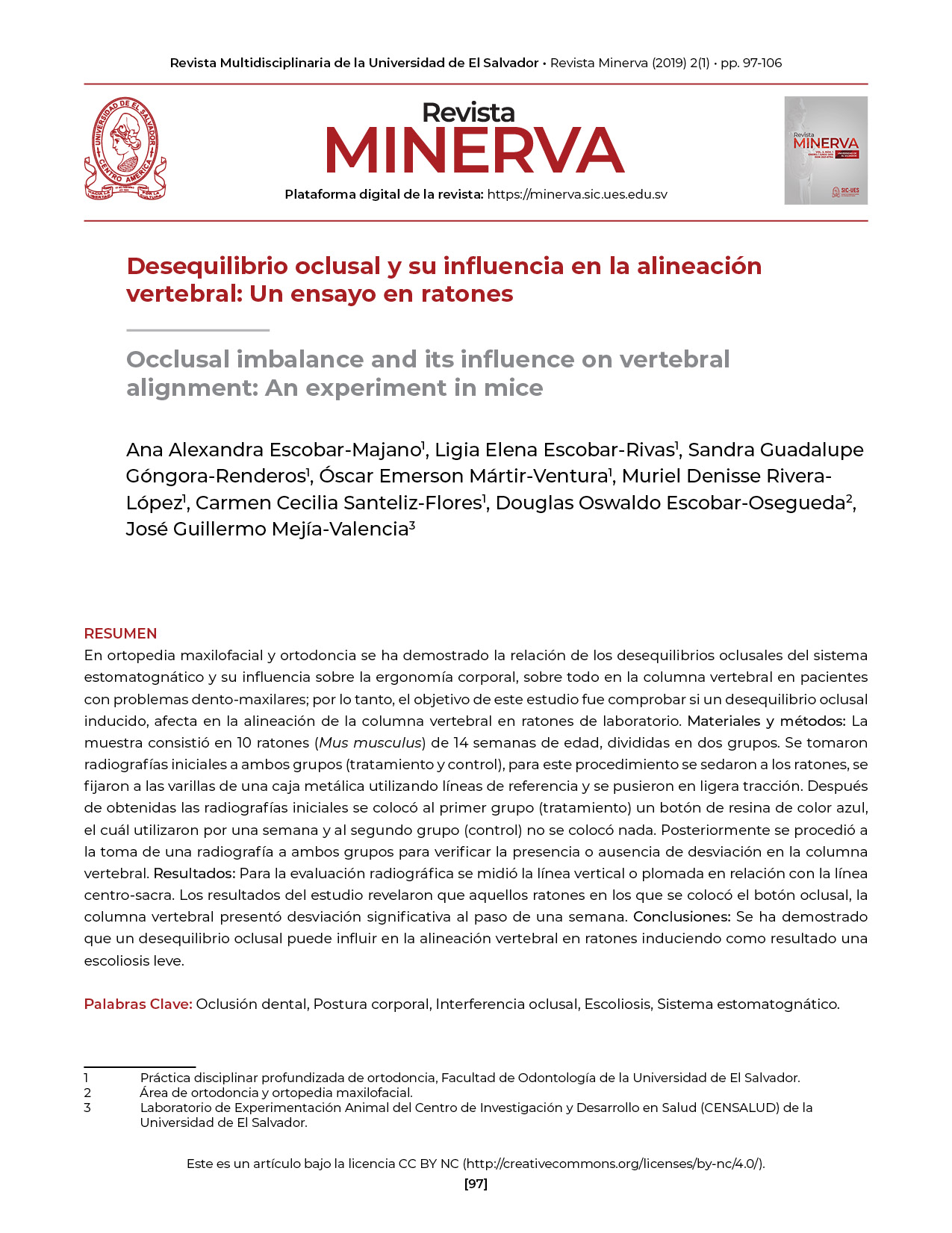Abstract
In maxillofacial orthopedics and orthodontics has been demonstrated the relationship between the occlusal disharmonies of stomatognathic system and its influence of the body ergonomics (posture), overall in the spine in patients with dento-maxillary issues; therefore, the objective of this study was to verify if an occlusal imbalance induced, affects the alignment of the spine in laboratory mice. Materials and methods: The sample consisted of 10 mice (Mus musculus) 14 weeks old, which were divided into two groups. Previous radiographic shots were taken to both groups (treatment and control), the mice were sedated and fixed to the rods of a metal box using reference lines and they put in slight traction. After obtaining the initial radiographs it was placed at first group (treatment) a button of blue-colored resin which they used for one week and to the second group (control) nothing was placed. A control radiograph was then taken to both groups to verify the presence or absence of deviation in the spine. Results: For the radiographic evaluation the vertical or plumb line was measured in relation to the vertical center sacral line. The results of the study revealed that those mice in which the occlusal button was put in the molar of the left side the vertebral column presented significant deviation at the passage of one week. Conclusions: It has been demonstrated that an occlusal imbalance can influence the vertebral alignment in mice inducing as a result a mild scoliotic.

This work is licensed under a Creative Commons Attribution 4.0 International License.
Copyright (c) 2019 Authors who publish in Revista Minerva agree to the following terms: Authors continue as owners of their work, assigning only dissemination rights to Minerva Magazine under the standards of the Creative Commons Attribution 4.0 International License (CC BY 4.0). This license allows others to mix, adapt and build upon the work for any purpose, including commercially, and although new works must also acknowledge the initial author, they do not have to license derivative works under the same terms.




